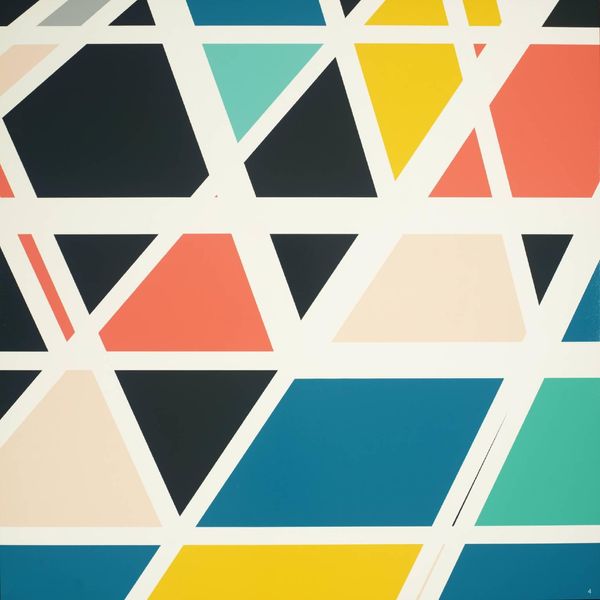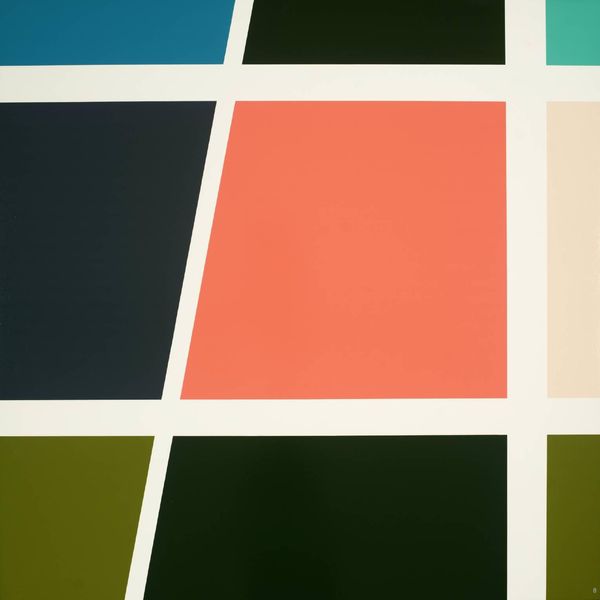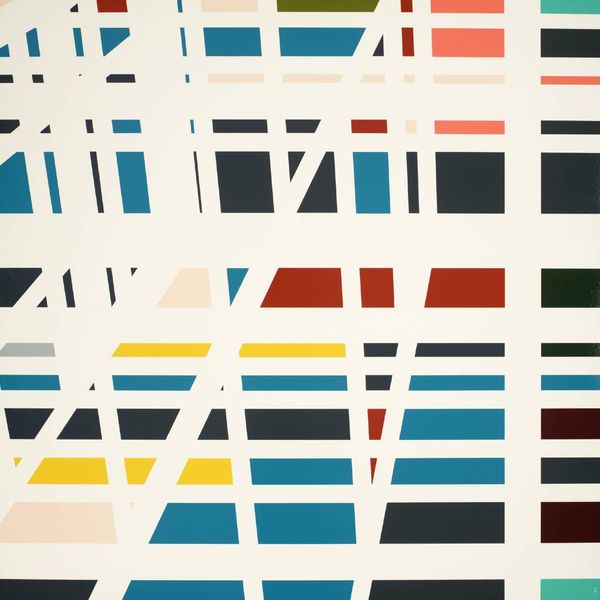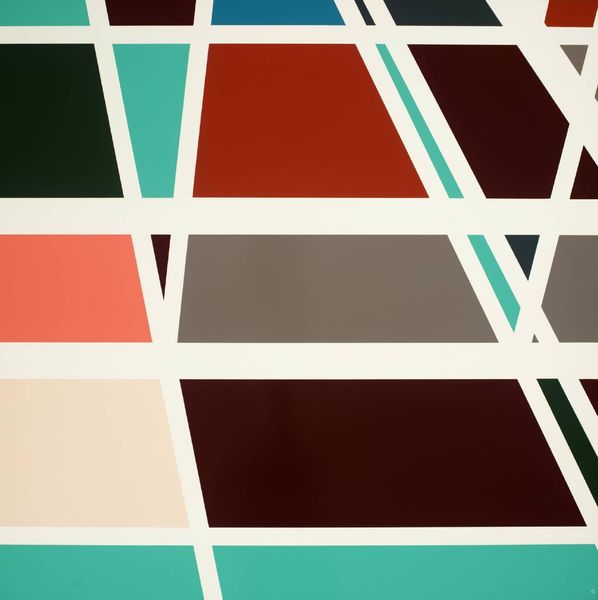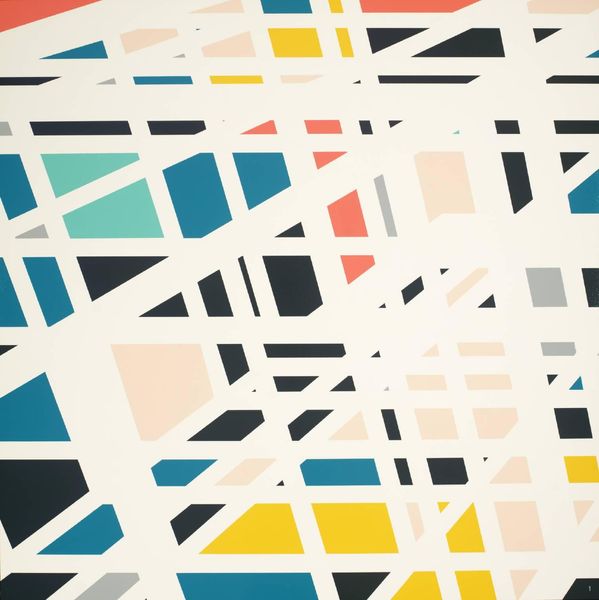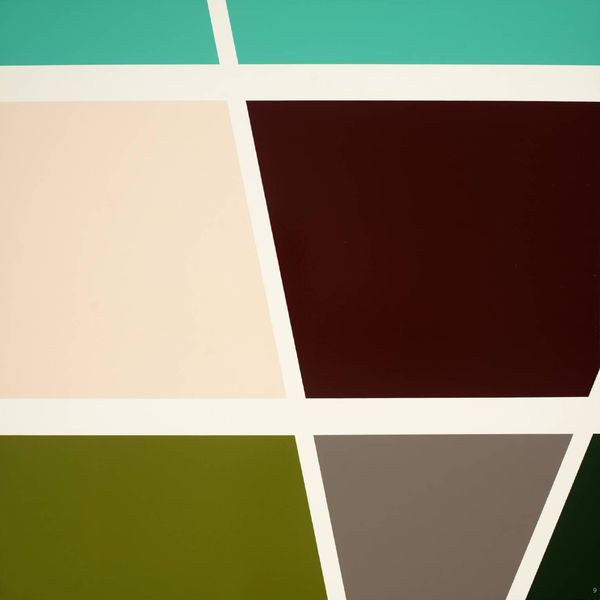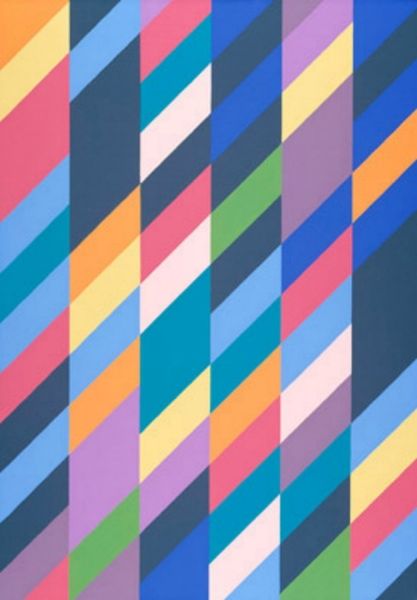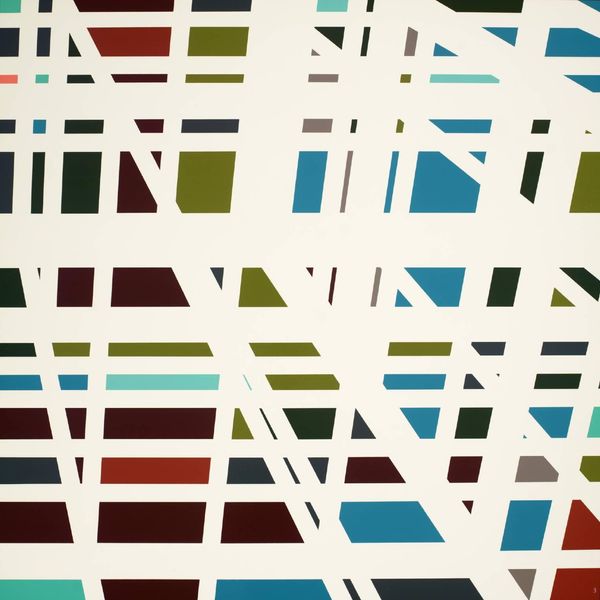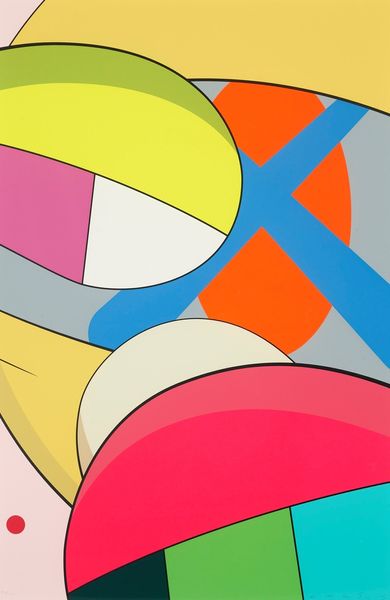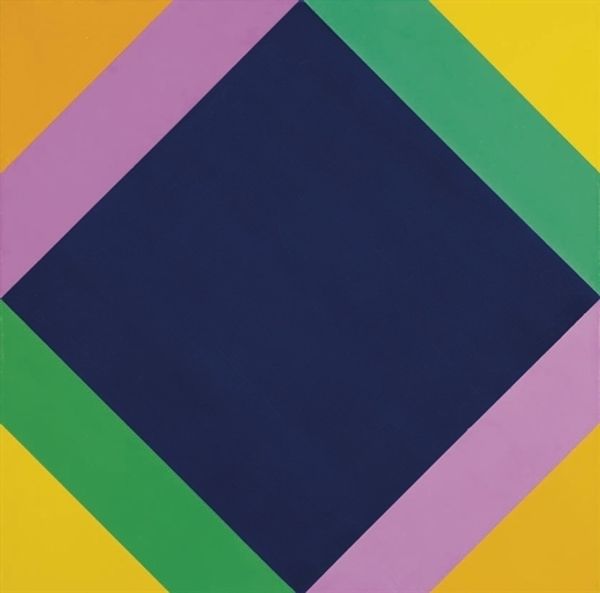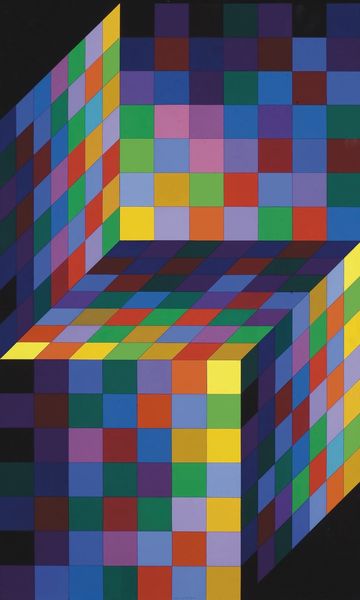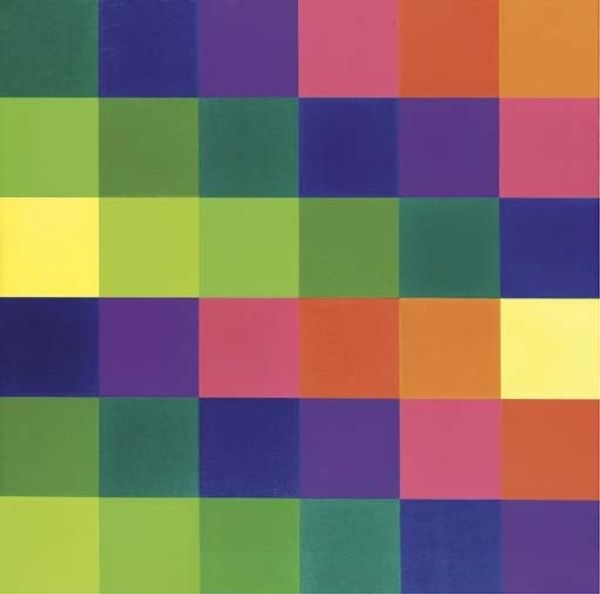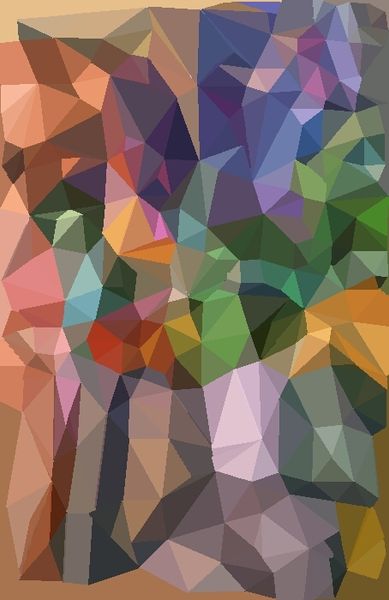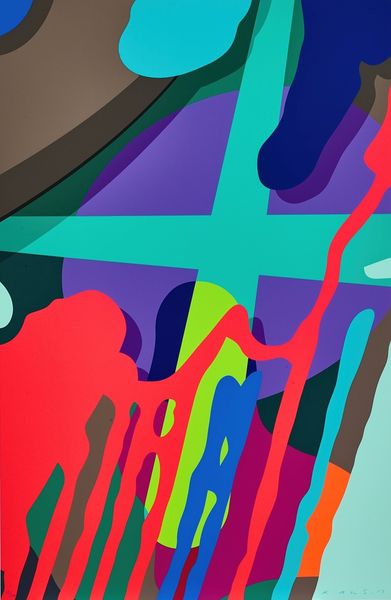![[no title] by Sarah Morris](/_next/image?url=https%3A%2F%2Fd2w8kbdekdi1gv.cloudfront.net%2FeyJidWNrZXQiOiAiYXJ0ZXJhLWltYWdlcy1idWNrZXQiLCAia2V5IjogImFydHdvcmtzLzdiYzJiMjU5LTliZWItNGFiYy04OWU2LTJhYjEyMGIyZGEyYi83YmMyYjI1OS05YmViLTRhYmMtODllNi0yYWIxMjBiMmRhMmJfZnVsbC5qcGciLCAiZWRpdHMiOiB7InJlc2l6ZSI6IHsid2lkdGgiOiAxOTIwLCAiaGVpZ2h0IjogMTkyMCwgImZpdCI6ICJpbnNpZGUifX19&w=3840&q=75)
Dimensions: image: 737 x 737 mm
Copyright: © Sarah Morris | CC-BY-NC-ND 4.0 DEED, Photo: Tate
Editor: This untitled work by Sarah Morris features geometric shapes in bright blues, yellows, and reds, intersected by white lines. It almost feels like a deconstructed Mondrian. What do you see in it? Curator: I see a reflection of institutional power. Morris often explores the architecture of power – think corporate headquarters or government buildings. The clean lines and bold colors evoke a sense of authority, almost like a blueprint for a modern institution. Editor: So, it's not just abstract shapes, but a commentary? Curator: Precisely. It questions the visual language these institutions use to project control and stability. The abstraction invites us to decode the hidden messages within those structures. What do you think about the scale? Editor: It definitely emphasizes the imposing nature of these institutions. I never considered that before. Curator: Exactly, it transforms abstract art into political commentary.
Comments
Join the conversation
Join millions of artists and users on Artera today and experience the ultimate creative platform.
tate 7 months ago
⋮
Dulles (Capital) is Morris’s first major print work. The portfolio comprises nine square prints containing abstract geometric grids. Blocks of bright greens, turquoise, yellow, browns, orange and greys are separated by white lines which appear recede into the distance at an extreme perspective. All nine prints may be displayed together, each print separated by 3.5cm of white wall, which becomes part of the work. They form a large square, depicting another, larger grid that echoes the structures within the individual prints. Displayed in this way they provide an off-centre variation of Morris’s painting Constitution Gardens 2000, (private collection). Each print is numbered in the lower right corner to designate its position within the overall grid. The bottom row (Tate P78602-P78604) is made up of large blocks of colour which become more broken up in the middle row (Tate P78599-P78601). By the top row (Tate P78596-P78598) the dense three-dimensional structure has become an intricate array of fragmented blocks and splinters of colour. Alternatively, the prints may be displayed individually or in smaller groups based on their positions within the full scheme.
